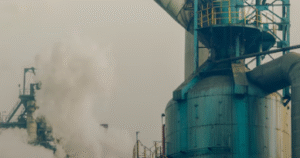#CoffeeMarket #ArabicaCoffee #RobustaCoffee #AgriculturalCommodities #CommodityPrices #WeatherImpacts #InvestingInCoffee #MarketTrends
The coffee market closed on a mixed note this past Friday, showcasing the complex interplay of factors that drive commodity prices. At the heart of the coffee trade are two primary types of coffee beans that hold sway over the market: arabica and robusta. May arabica coffee (KCK24) ended the day on a high note, soaring up by 5.75 cents, or an impressive 2.78%, marking a new peak that hadn’t been seen in over five and a half months. On the other end of the spectrum, May ICE robusta coffee (RMK24) took a slight hit, edging down by 22 points, which translates to a decrease of 0.58%. This divergence in performance between the two coffee types underscores the nuanced nature of the coffee market and highlights the variety of factors at play, namely weather phenomena and their consequential impacts on crop yields.
Arabica coffee, renowned for its smooth, slightly acidic flavor profile, has been experiencing a price surge, a trend primarily attributed to increasing concerns over the impact of recent heavy rainfall on the crops. These weather conditions have particularly affected key coffee-growing regions, where the excessive moisture can hamper the flowering of the coffee plants and, ultimately, affect the size and quality of the harvest. Such weather-related uncertainties often result in price volatility as traders and investors react to potential threats to supply. Arabica beans, being the more sensitive of the two varieties to precise growing conditions, often show more price fluctuation in response to changes in weather patterns.
Conversely, robusta coffee, which is typically grown at lower altitudes and boasts a bolder, more robust flavor, has shown a slight decrease in price. This could be attributed to a different set of factors affecting its production, possibly including favorable weather conditions in regions where it is primarily grown, leading to expectations of a bountiful harvest. Robusta beans are generally more resistant to pests and adverse weather conditions, which might explain the less dramatic price movements as compared to arabica. However, the global demand for coffee, the speculative trading in commodities markets, and other geopolitical factors also entwine to dictate the price movements of both arabica and robusta coffee.
The mixed closing figures for the coffee markets illustrate the fragility and susceptibility of agricultural commodities to a myriad of influences. Traders, investors, and other market participants closely monitor weather reports, harvest forecasts, and global demand indicators to inform their trading strategies. Furthermore, the fluctuating prices of arabica and robusta coffee not only affect the commodities market but also have a direct impact on the entire supply chain, from farmers to consumers, influencing everything from production costs to the price of your morning cup of coffee. As such, understanding the dynamics of the coffee market offers valuable insights into the broader agricultural commodities markets and the global economy at large.







Comments are closed.